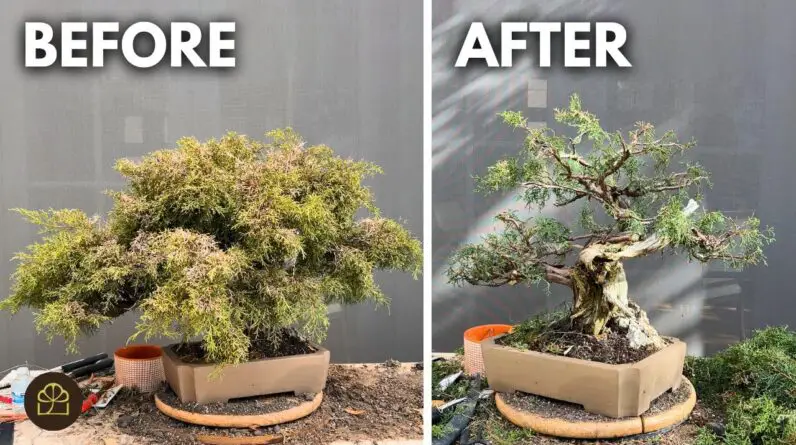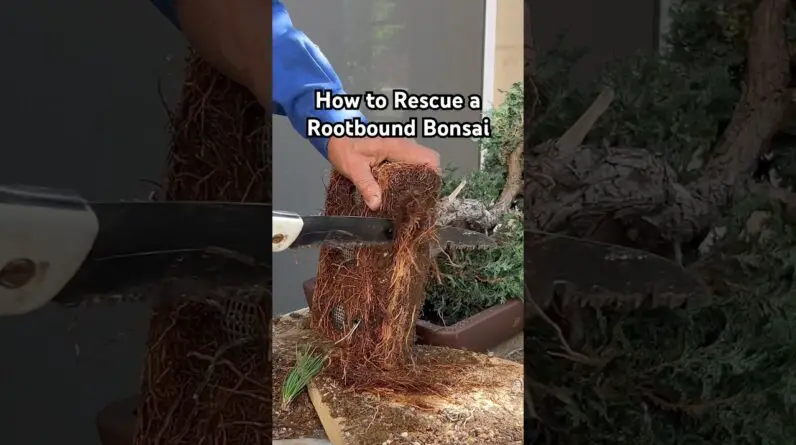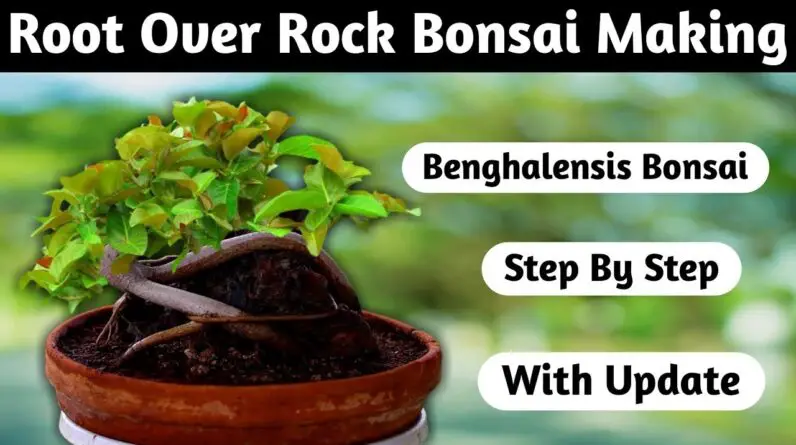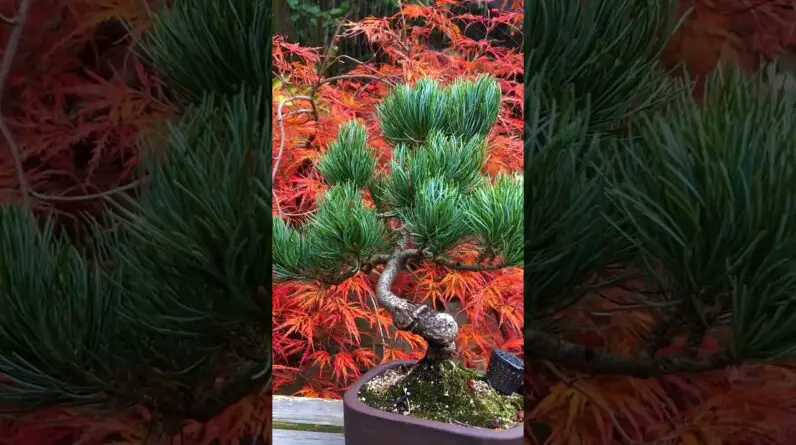Want to find out exactly how to make an Apple bonsai tree? In this video by Bonsai Realm, they show you just how to trim and wire an Apple tree that is around 15 years of ages. The video was shot throughout autumn, when the tree was filled with little apple trees.
Bonsai Empire is passionate about sharing the living art of Bonsai and developed this do it yourself tutorial to assist and motivate newbies. This video clip belongs to their on the internet courses, yet they supply numerous other cost-free videos as well.
So if you’re interested in finding out more regarding Bonsai techniques, head over to Bonsai Realm’s internet site!
In the video, they explain the process of pruning and wiring this Apple bonsai tree. They utilize small trimming shears, pliers, and cord cutters. The leading branch is the first to be cut, and then they focus on 2 thicker branches to attain the preferred silhouette.
They demonstrate the relevance of a 360-degree method when cutting and electrical wiring to prevent any dead angles. After the trimming and wiring, the tree looks extra refined and well balanced. With normal upkeep, this tree will certainly remain to thrive and grow new branches in the upcoming spring. If you wish to find out more concerning pruning, wiring, and repotting strategies, take into consideration joining Bonsai Empire’s on the internet courses and access to expert advice and the possibility to ask the trainers questions directly.
Apple Bonsai Tree: An Introduction
Welcome to the globe of apple bonsai trees! Producing and cultivating a small apple tree can be a gratifying and meeting leisure activity. Not just do these bonsai trees give a gorgeous aesthetic, however they likewise supply the opportunity to grow your own fruits in a tiny and workable room.
In this thorough article, we will lead you via the process of picking the right apple tree selection, collecting the essential products, growing the tree from seeds, trimming and wiring techniques, appropriate upkeep, potting considerations, and the differences between outside and indoor apple bonsai trees.
Consider the Dimension of the Bonsai
When choosing an apple tree selection for bonsai growing, it is necessary to think about the ultimate dimension of the tree. Considering that bonsai trees are meant to be mini variations of their larger equivalents, picking a range that normally remains little is crucial. Search for apple tree varieties that are understood for their compact development and smaller stature, such as columnar apple trees or naturally dwarf varieties. This will certainly guarantee that your bonsai continues to be symmetrical and is much easier to take care of.
Select a Crab Apple Tree Range
Crab apple trees, with their tiny and dynamic fruits, are frequently the favored selection for apple bonsai cultivation. These trees naturally have a lot more fragile and proportional attributes, making them well-suited for bonsai appearance. Furthermore, crab apple trees are durable and versatile, making them much easier to take care of and maintain as bonsai samplings. Take into consideration ranges such as Malus sylvestris or Malus floribunda, which are typically used in bonsai farming.
Consider the Climate and Area
Before choosing the apple tree variety for your bonsai, it’s important to take into consideration the environment and location where you intend to grow it. Different apple tree ranges grow in various climates, so choose a variety that is fit to your certain area. Furthermore, keep in mind the amount of sunshine and temperature demands of the chosen variety. Many apple trees require full sun to thrive, so make certain that your selected place gives adequate sunshine throughout the day.
Select a Suitable Bonsai Pot
Choosing the right bonsai pot is important for the health and aesthetic appeals of your apple bonsai tree. Look for a pot that is proportional to the size of your tree and matches its total style. Bonsai pots come in different products such as ceramic, plastic, or clay. Each product has its own benefits and factors to consider, so pick one that suits your personal choices and the specific demands of your apple bonsai tree.
Obtain Quality Bonsai Dirt
High-quality bonsai soil is essential for the healthy development of your apple bonsai tree. The dirt needs to give adequate drain while maintaining enough wetness for the tree’s origins. You can purchase pre-made bonsai dirt mixes that are particularly made for bonsai farming, or you can develop your own mix by incorporating components such as Akadama, pumice, and lava rock. Experimentation with various soil blends might be necessary to discover the excellent equilibrium for your apple bonsai tree.
Obtain Pruning and Circuitry Devices
Pruning and electrical wiring are important techniques for forming and maintaining the kind of your apple bonsai tree. To successfully prune and wire your bonsai, you will certainly require a set of correct tools. Some crucial tools consist of a concave branch cutter for accurate pruning, bonsai wire cutters for taking care of the wire, and pliers or tweezers for intricate job. Buy high-quality tools to ensure accuracy and decrease damages to your apple bonsai tree.
Accumulating Apple Seeds
One of one of the most fulfilling methods to begin an apple bonsai tree is by growing it from seeds. You can accumulate apple seeds from ripe fruits or acquire them from trustworthy providers. Guarantee that the seeds are fresh and viable for the very best possibilities of germination.
Prep work of Seeds for Growing
Before planting the apple seeds, it is necessary to prepare them for ideal germination. Start by saturating the seeds in water for 24 hours to soften the external seed layer. After soaking, remove the seeds from the water and permit them to dry for a couple of days. This process assists damage the seed’s inactivity and boosts the opportunities of successful germination.
Growing and Germination Process
As soon as the seeds are prepared, plant them in little pots full of well-draining bonsai soil. Location the pots in a cozy and bright place, and keep the soil constantly damp. Germination usually takes about 2 to four weeks, relying on the selection and ecological conditions. Once the plants have actually sprouted, pick the healthiest ones to continue growing as your future apple bonsai trees.
Understanding Trimming Techniques
Trimming is a critical facet of bonsai cultivation that helps maintain the tree’s size, shape, and general aesthetics. By precisely removing branches and foliage, you can attain the wanted type and balance. Learn about various trimming methods such as maintenance trimming, branch pruning, and squeezing to keep the health and shape of your apple bonsai tree.
Determining the Right Branches to Prune
When pruning your apple bonsai tree, it is very important to determine the branches that need to be trimmed. Try to find branches that interrupt the wanted form or prevent the tree’s total equilibrium. Get rid of any kind of dead, damaged, or undesirable branches to promote healthy and balanced development and avoid disease. Get in touch with bonsai resources or seek support from experienced bonsai fanatics if you’re unclear which branches to trim.
Trimming to Achieve Desired Forming
Trimming is not just about upkeep however also concerning shaping your apple bonsai tree. Usage pruning techniques to direct the tree’s development and achieve the wanted shape and style. Think about standard bonsai forms such as official upright, slanting, or cascade, and adapt them to match the characteristics of your apple bonsai tree.
Preparing the Tree for Electrical wiring
Wiring is another vital strategy in bonsai farming that helps create and keep the desired form and framework of your apple bonsai tree. Before applying cables, make sure that the branches and trunk are adaptable sufficient to be controlled without causing damage. Younger branches are more flexible and less complicated to wire, while older branches might need gradual bending with time.
Selecting the Right Wire Dimension
Selecting the suitable wire size is important to avoid harming the branches of your apple bonsai tree. The cord ought to be solid enough to hold the wanted shape without cutting into the bark. Select a cord dimension that is around one-third of the density of the branch being wired. Copper or light weight aluminum cord is generally made use of, yet see to it it is soft enough to be easily formed.
Applying Circuitry Methods
To wire your apple bonsai tree, beginning by wrapping the cord at the base of the branch or trunk and after that gently spiral it upwards, making certain to maintain a 45-degree angle between the cable and the branch. Beware not to wrap the cable as well snugly, as it can restrict the tree’s blood circulation and trigger damages. As soon as the preferred form is accomplished, protect the wire by twisting completions with each other or using cable clips. Get rid of the wire after a couple of months to avoid it from cutting into the bark.
Watering and Wetness Control
Proper watering is crucial for the wellness and vitality of your apple bonsai tree. The frequency and amount of water required depend upon different elements such as the climate, pot dimension, and tree’s growth stage. Water your apple bonsai tree when the leading inch of soil really feels completely dry, making sure that the water reaches the whole origin system. Stay clear of overwatering, as it can lead to root rot and various other fungal illness.
Feeding and Nutrient Needs
Maintaining dirt fertility is crucial for the healthy growth of your apple bonsai tree. Use a well balanced plant food throughout the expanding period to supply the necessary nutrients for optimal growth. Usage natural or slow-release fertilizers specifically formulated for bonsai trees, adhering to the suggested dose directions. Regularly check the tree’s feedback to fertilizing and readjust the feeding regimen as necessary.
Pest and Disease Administration
Like any other plant, apple bonsai trees can be prone to different pests and illness. Routinely examine your tree for signs of invasion, such as blemished fallen leaves, insects, or irregular development. If any type of problems are detected, quickly take proper measures to control and get rid of the issue. Consider using organic parasite control techniques or seek advice from specialists if necessary.
Repotting Frequency and Timing
Repotting is an important job in bonsai farming that allows for origin system health and wellness and overall development control. The regularity and timing of repotting depend on numerous elements such as the age and development rate of the apple bonsai tree. As a basic standard, repotting is typically done every 2 to 3 years, ideally throughout the very early spring before the tree starts proactively growing.
Choosing an Appropriate Bonsai Pot
When repotting your apple bonsai tree, select a new pot that is slightly larger than the existing one. Consider the appearances and overall balance of the tree when picking the pot’s shape and style. Make sure that the pot provides sufficient drain openings and is made from a material that is suitable for bonsai growing.
Transplanting and Root Pruning
Throughout repotting, very carefully get rid of the tree from its present pot and carefully loosen the root ball. Examine the origins and cut any kind of broken or excessively long origins. This process, referred to as origin trimming, helps stimulate new origin growth and keeps the tree’s origin system small. After origin trimming, put the tree in the new pot, guaranteeing that the roots are evenly distributed and covered with fresh bonsai dirt.
Appropriate Potting Strategies
When potting your apple bonsai tree, usage correct strategies to ensure its security and healthy development. Placement the tree a little off-center in the pot to develop a sense of motion and balance. Protect the tree in position using bonsai cables or rocks, and load the staying space in the pot with bonsai soil, ensuring that no air pockets are left. Water the newly potted tree extensively and check its recovery during the following weeks.
Advantages and Factors To Consider for Outdoor Bonsai
Growing an exterior apple bonsai tree enables it to experience the all-natural altering seasons, which can enhance its overall beauty. Outdoor bonsai trees generally have more space to grow and develop a stronger root system. However, outdoor bonsai trees require careful consideration of climate and weather conditions, protection from extreme temperature fluctuations, and regular exposure to sunlight.
Benefits and Challenges of Indoor Bonsai
Growing an apple bonsai tree indoors provides more controlled conditions and allows enthusiasts in colder climates to enjoy bonsai cultivation year-round. Indoor bonsai trees require careful attention to temperature, humidity, and lighting conditions. Supplemental lighting may be necessary, especially during the winter months when sunlight exposure is limited. Additionally, indoor bonsai trees may require more vigilant pest and disease management due to the controlled environment.
Creating and caring for an apple bonsai tree is a rewarding and fulfilling endeavor. With proper knowledge and techniques, you can enjoy the beauty of nature in a miniature form and even grow your own miniature apples.
By choosing the right variety, gathering the necessary materials, mastering pruning and wiring techniques, maintaining proper care, and selecting the right pot and location, you can cultivate a stunning apple bonsai tree that brings joy and tranquility to your surroundings.
Happy bonsai cultivation!
[sspostsincat category=”Can You Grow A Bonsai Apple Tree Indoors”]













